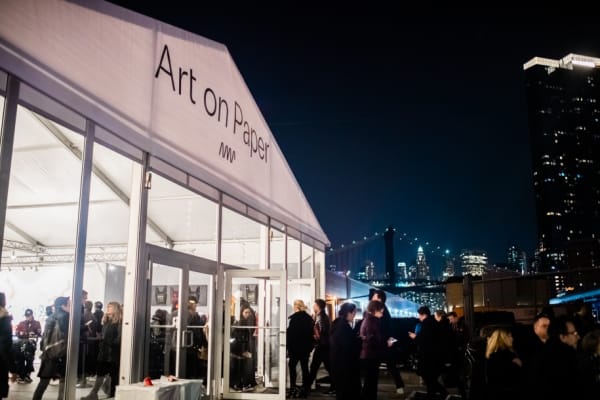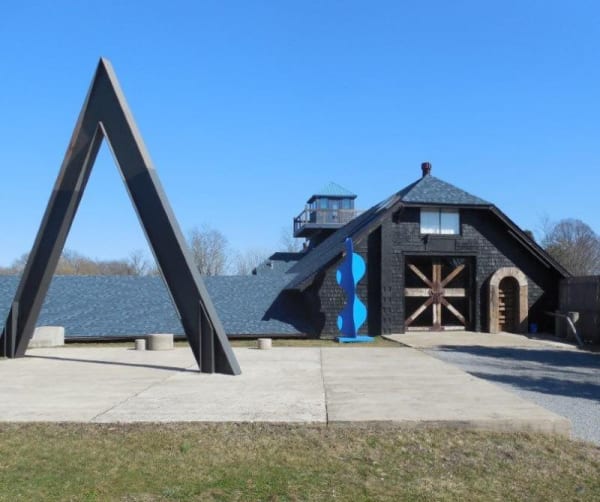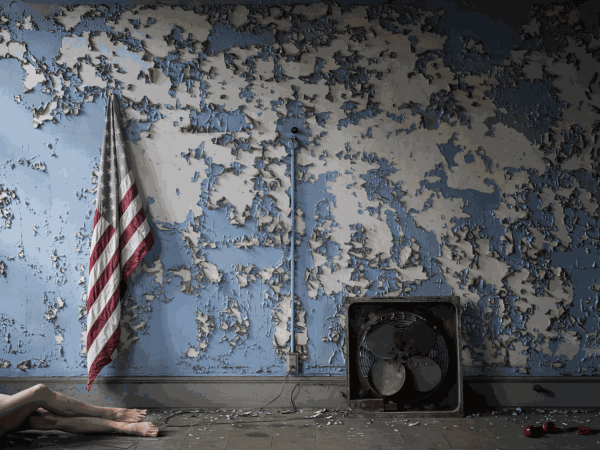Primitive communication and expression of the raw terror of survival in those times are felt in Louis Tavelli's later work.
Louis Tavelli's paintings and drawings span a period of over six decades. He attended the Colorado Springs Art Center as a young man, eventually teaching painting at the University of North Carolina, Cooper Union in NYC and the University of Michigan. Summers were spent in Woodstock, NY where he had a studio in the back of an old theater on Maverick Road with other artist neighbors.. Woodstock, being an established artists community, was inhabited by dancers, musicians, artists and writers. Tavelli was a member of the progressive "New Group" of artists there which included Phillip Guston, Raoul Hague, Edouard Chavez, Nicolas Marsicano and Tavelli’s closest friend, Manny Bromberg . Lou was also a talented professional violist and violinist. He started performing on stage in his hometown; Williamstown, MA as a youth accompanied by his mother at the piano. At college, he won a scholarship to the Eastman School of Music in Rochester, NY. It was during this time that Lou and his string quartet began performing with the annual summer Maverick Concert Series in Woodstock. Louis supported himself performing at fancy mansion parties while at the same time, he could continue painting in an inspiring atmosphere among other cutting edge artists. Together with his wife and young daughter, Lou eventually bought property in Woodstock. He loved building bonfires in the front yard while personalities on Maverick road would drift over and congregate, enjoying the warm summer evenings. The early period of his career, 1945 - 1961 was prolific and we see his development in America's art scene through the eras of post impressionism, Asian calligraphic influence, cubism and abstract expressionism.
Lou Tavelli considered himself a painter first and foremost and his work as a musician was in essence, his “day job”. He performed as Principal violist for the Albany Symphony, Vermont Symphony, and Berkshire Symphony and toured with his chamber group featuring exotic combinations of instruments and premiering contemporary compositions. One of the chamber music engagements took Tavelli to Spain where he visited the neolithic caves in Altamira. These early images created by ancient humans had an immense influence on Tavelli’s creative process. Lou set aside abstract expressionism and non-objective subject matter in favor of symbols, pictographs and spontaneous, direct layering much like contemporary street art. This new figurative work featured wide-eyed warriors either hunting with spears or preparing to battle expressing the raw terror of survival. Ominous bulls return the threat and the battle between man and beast was frantically fought across canvases and sheets of paper. It was these gestural expressions of survival that became the dominant theme in Louis Tavelli's later work until his death in 2010.
Lou Tavelli’s extensive exhibition resume included wide-ranging group exhibitions in respected New York galleries such as Hacker, Camino, Berta Schaeffer, Washington Irving, Krasner, Rice, Knapik, Stable, Parnassus Square, Judson Smiths, Woodstock Artists Association and Polari Gallery and solo exhibits at Hacker, Bennington College, Williams College, New York State University at Albany, Mari Gallery in Woodstock, Raleigh Museum of Art, and the University of Michigan Art Gallery. Recent auction sales of Lou Tavelli’s paintings have supported the legacy of this remarkable painter.
These Hunters don’t belong on urban walls. They are primitive beings, like those made by the folk who began painting cave walls 36,000 years ago. Tavelli captures the raw-energy of the original man and tells the epic story of his lives throughout history.
--Anthony Haden-Guest
Lou Tavelli, who died in 2010 ago aged 96, was both an Ab-Ex artist and a professional musician - a violinist - and his painting clearly channelled his musical sensibility. He spent much of his adult life in Woodstock, where he was a friend and neighbour of Philip Guston, who had dropped out of Ab-Ex to make the brutalist comic-strippy paintings that are now his most prized work, and it is tempting to imagine that this might have had some effect on the development of Tavelli.
It was on a 1983 trip to Spain that Tavelli saw the cave paintings in Altamira. The impact was profound. Soon he was working on what he called his Indigenous Peoples Series. These paintings, such as the works called Hunters and Hunters and Prey, are at once raw and deft. Tavelli had clearly been absorbing the work of such graffiti stars as Haring and Basquiat, and his canvases show that he could devise and orchestrate glyphs, signs, pictograms with aplomb, but it's equally clear that his work doesn't exhale the air of the inner city. These Hunters don't belong on urban walls. They are primitive beings, like those made by the folk who began painting cave walls 36,000 years ago. Tavelli captures the raw-energy of the original man and tells the epic story of his lives throughout history.
--Anthony Haden-Guest
-

ART ON PAPER
Booth A-13 | Pier 36 | New York City September 8 - 11, 2022Cross Contemporary Art Projects curates a pop-up exhibition at Art on Paper - an art fair devoted to works of art on paper. This special show features work by Virginia...Read more -

ART MARKET HAMPTONS
Water Mill | New York August 11 - 14, 2022Cross Contemporary Art Projects goes to the beach for Art Market Hamptons ! Join us for a pop-up exhibition of paintings and drawings by contemporary artists with work by Virginia...Read more
-

ART ON PAPER NYC
Booth A-13 | Sept 9-11,2022 September 8 - 11, 2022Cross Contemporary Art Projects goes to New York City for the annual Art on Paper Art Fair located in downtown Manhattan's Pier 36, Sept 8...Read more -

ART MARKET HAMPTONS
Water Mill, NY August 11 - 14, 2022On August 11-14 2022, Cross Contemporary Art Projects goes to the beach for Art Market Hamptons with work by Virginia Bradley, Susan Copich, Laura Hexner, Kaethe Kauffman, Anne Leith, Bobbie Moline-Kramer, Alvin Roy, Kurt Steger, Melinda Stickney-Gibson, Lou Tavelli and Martin Weinstein.Read more
-

ART ON PAPER NYC
Booth A-13 | Sept 9-11,2022 September 8 - 11, 2022Cross Contemporary Art Projects goes to New York City for the annual Art on Paper Art Fair located in downtown Manhattan's Pier 36, Sept 8...Read more -

ART MARKET HAMPTONS
Water Mill, NY August 11 - 14, 2022On August 11-14 2022, Cross Contemporary Art Projects goes to the beach for Art Market Hamptons with work by Virginia Bradley, Susan Copich, Laura Hexner, Kaethe Kauffman, Anne Leith, Bobbie Moline-Kramer, Alvin Roy, Kurt Steger, Melinda Stickney-Gibson, Lou Tavelli and Martin Weinstein.Read more



